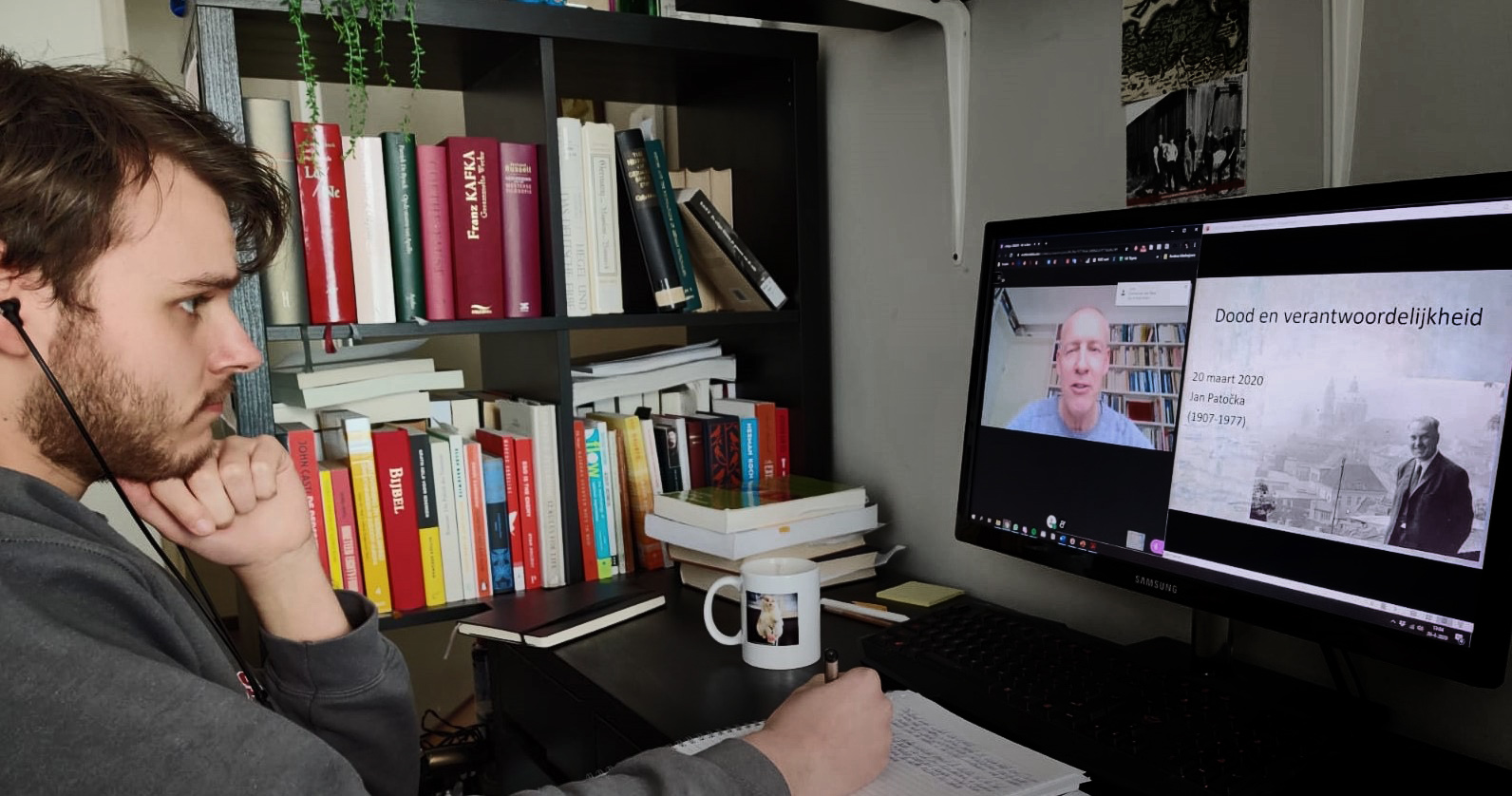Why are we so reluctant to use Zoom?

Op-ed: Why are we so reluctant to use Zoom?
Last week, the UG sent us a letter detailing which platforms and programs we’re allowed to use to work from home, and to teach online in particular. Since the coronavirus will make on-campus education impossible for the foreseeable future, I read the letter with great interest.
Upon closer inspection, the tools we’ll have at our disposal turn out to be quite limited. Blackboard Collaborate remains the most used program. It is versatile: you can create small groups, record and play video, and many other things. However, the program’s underlying didactic concept is outdated.
The features all seem to be geared towards one thing: letting the lecturers broadcast their message in the best way. It fails to take into account how important it is to know how students are responding. All lecturers have to go on are the questions students type in the chat window.
They only have visual of a maximum of four students. But that’s what teaching is all about: any lecturer worth their salt wants to see that their students understand what they’re saying. It’s something they can, nay, must take advantage of. With no student interaction, you might as well just play a recorded video. But that should only be a tool. This isn’t teaching.
The second program on offer is Google Meet. It allows everyone to see each other, which is a relief for lecturers who teach small groups. However, the audio and video quality is lacking, and session participants cannot be divided into smaller groups. Anyone who wants to liven up class by making students discuss and do assignments together will not be able to use this program.
Finally, there’s BlueJeans. Access to this program is protected, which I initially thought was a good thing. The program allows lecturers to see their students and divide them into groups. However, its capacity is limited and whenever there are more than fifteen people using the program at once, their faces start getting blurry.
And that’s about it. That well-known program starting with the last letter of the alphabet is conspicuously missing (before you ask: no, I don’t own any shares in it). But this is actually the only program that would allow us to teach properly at all.
As my time at the university of Stockholm taught me, it allows up to 250 participants at once (split over five screens), enables the user to form groups, has a whiteboard function, and makes it easy to see who wants to speak.
In addition to using a chat function, students can actually talk to their lecturer. The more they have this opportunity, the likelier they are to turn on their camera. Even when two people are talking at once, they can both still be heard clearly. The only drawback is that this program only allows you to see five faces at once when you’re doing a PowerPoint presentation.
Any lecturer worth their salt wants to see that their students understand what they’re saying
Of course, this platform has known privacy issues. The UG should be applauded for taking this seriously; privacy is important. In the letter ‘Working from home and the GDPR’ we received last week, the UG names three concerns:
- Zoom installs software on end users’ PCs, which makes the devices vulnerable to hacking
- Zoom uses end users’ data for its own commercial purposes
- Zoom meetings can easily be broken into
These are all disadvantages, to be sure, but all the other available programs suffer from these issues, too. BlueJeans, for one, also installs software on your computer.
Regarding the second point: I’d bet my life on Google having the same commercial purposes. In fact, the UG probably should never have gone into business with Google, but that’s a discussion for another time.
The third disadvantage mentioned appears to already be obsolete. The people who broke into Zoom sessions in March were technically invited, since people made links public, or the meeting code was visible in screen grabs made during the meeting. Zoom no longer shows these meeting codes and protects its sessions with a password. Finally, this week, Zoom has started using end-to-end encryption, something the platforms we’ve been told to use do not.
Fortunately, I’m a law philosopher and not an expert, so I’m glad the university is taking it seriously and waiting for a data protection impact assessment. But my burning question is: How long will this take? We’re in a hurry!
We may not be able to see our students in the flesh, but we’d love to see their faces as we explain things to them. Students would also greatly benefit from being able to talk to their lecturers, ask them questions, and discuss things with their lecturer and each other.
If Zoom is truly that unsafe, why not find a worthy alternative that will enable us to properly teach over the next few months?
What’s more, if we have the proper facilities, we won’t have to record any extra videos explaining things or organise any webinars. We’d simply do what we’ve always been doing: seeing students’ faces, looking for people who want to ask a question, letting people speak, and responding to that.
Could it be that Zoom is too expensive for the UG? If so, I think I might move back to Stockholm.
Pauline Westerman is a professor of philosophy of law



